
Contents
New research conducted by Memesbams.com has made it very clear that, in today’s world, men and women want to receive tender, often sexy words of love. The overwhelmingly preferred way to receive those messages? By text.
Positive Effects of Texting – Key Findings
- 53% of men/women report receiving amorous messages from their partner. There was no statistical difference between men/women.
- 51% of men/women who aren’t receiving wish they were. In total 77% or respondents were either receiving them or wishing they were.
- Men who aren’t receiving them are statistically more interested in receiving them moving forward then women.
- Text was by far the most common mode of communication for those receiving amorous messages from their partner. 86% of women, and 79% of men respectively. It was also the most desired with 73% of women, and 66% of men rating it as a preferred channel.
- Second choice? Do it in person. 47% of women, and 38% of men rated it as a preferred channel.
- Letters/Card long a staple of romantic communication has declined in today’s digital age, with only 9% of men/women sending them to their significant other.
- Love messages by email aren’t that common, nor are they very desired by either men or women.
Background
Texting is one of the channels that are relied upon by romantic couples in terms of communicating amorous messages. It plays a crucial role in strengthening relationships, especially couples that have to deal with the toils and the challenges of sheer physical distance or geographical separation.
Back in the day, romantic couples would engage in a series of face-to-face encounters as a primary means of establishing and evaluating quality connection and compatibility. (1) Communicating by means of other channels, such as phone calls, letters, and cards, had also been prevalent but person-to-person interaction was, in general, preferred as it acted as the core of choice for amorous communication.
The rise of texting over roughly the past decade seems to have engendered a substantial shift in the favored course of communication. It now appears to be the mainstream channel for supplementing or sustaining romantic relationships to satisfaction. Thus, this notion warrants research.
In this study, we aim to determine the prevailing channel for communicating amorous messages in romantic relationships. This research addresses questions, such as at what percentage of the participants did receive affectionate messages, if they were fond of receiving them, and what their preferences in terms of receiving and sending amorous messages were.
This research shall provide a methodical basis in designating the most-preferred channel nowadays, and therefore, help individuals in discerning the most effective way of delivering amorous messages and in setting expectations in their own relationship.
Methods
Participants consisted of random visitors of MemesBams.com, a site dedicated to helping couple’s relationships improve through better communication. The study took place from September 1, 2020 to October 5, 2020. A total of 2,730 English speaking visitors to the website involved in a committed relationship were grouped into male and female respondents.
Respondents were asked if their current or previous significant other sent them sexy or loving messages. If the respondents answered “yes”, they were asked to specify the mode of communication used by their partner, i.e. in-person, text, letter/card, email, and/or others. (Note: “Others” refers to the other means not included in the options.) They were, then, asked for their preferred channel.
A “no” answer to the initial question led to another of whether or not they would like to receive those messages. If they answered “yes”, they were, then, asked for their preferred channel.
Data were collected after the survey period and analyzed for statistical significance.
This research did not identify the role of other variables, such as demographic factors (e.g. race/ethnicity and age), socioeconomic factors (e.g. marital status, occupation, education level) and geographical factor (physical distance) in connection to the preferred modes of amorous communication.
Results
A total of 2,730 (females: 1,145, males: 1,585) participated in the survey. Figure 1 shows that 54.1% of the female respondents and 52.4% of males affirmed receiving amorous messages from their significant other, resulting in an average of 53.2%. There was no link between gender and the experience of receiving amorous messages from partners, x2 (1, N=2730) = 0.9, p>0.5.
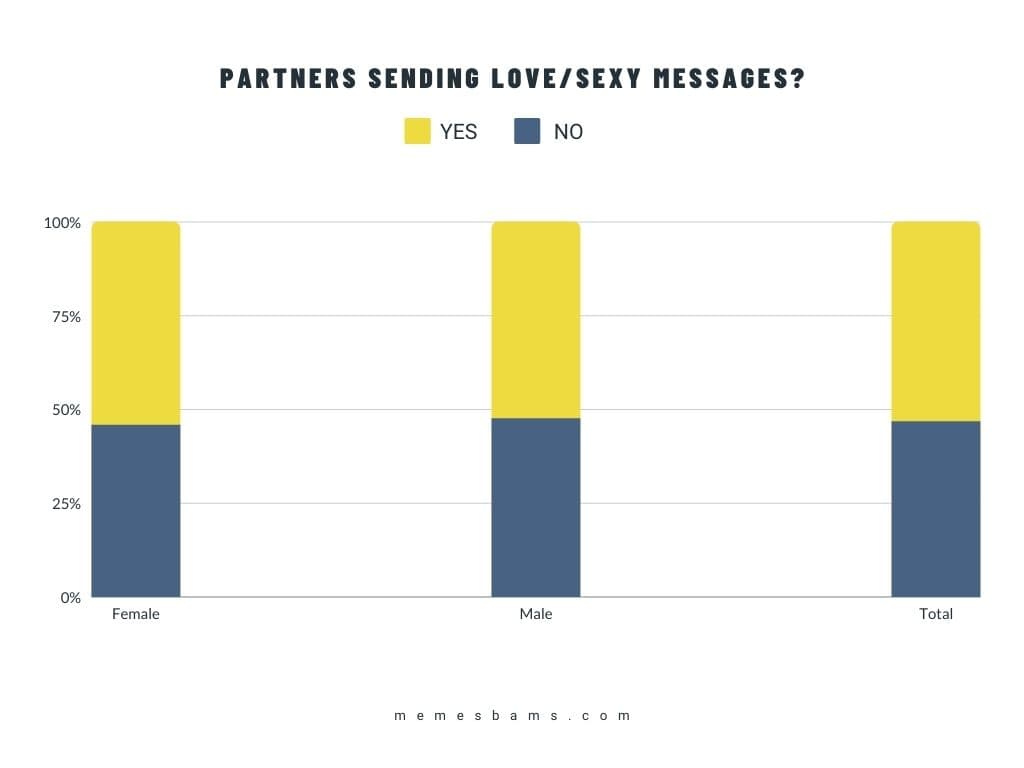
Figure 1: Percentages of respondents receiving and not receiving amorous messages from their partners
What can be deduced from these data are as follows:
- Slightly more than half of both female and male groups received amorous messages from their partners while the other lower half of their corresponding opposite groups did not.
In Figure 2, the proportions of the different channels used by the partners of those who reported receiving amorous messages are shown. Based on these data, texting was the prevailing mode of amorous communication for both females (86.3%) and males (78.6%).
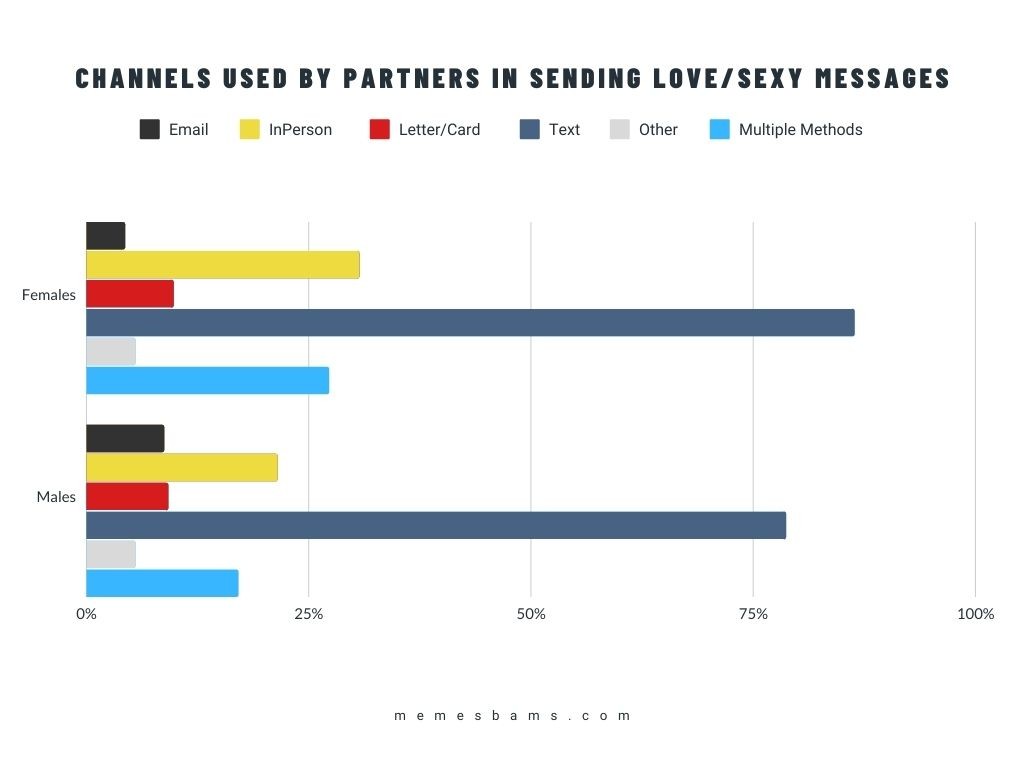 Figure 2: The percentages of the different amorous communication used by the respondents’ partners
Figure 2: The percentages of the different amorous communication used by the respondents’ partners
What can be deduced from these data are as follows:
- Texting was the principal mode of communication used by the respondents’ partners in sending love/sexy messages. It is more dominant than in-person by almost three times as much.
- Letter/card and email were lesser popular channels among the respondents’ partners.
- 27.2% of women reported receiving love/sexy messages from multiple sources compared to 17% of men. Meaning women are either more observant, their partners use more forms of communication, or both.
Figure 3 summarizes the responses of the participants as to their channel preferences for amorous messages. In females that received amorous messages, 72.6% preferred receiving them by text and only 6.1% by email. As for males that received amorous messages, 65.7% preferred to receive them by text. Both females and males next preferred in-person (face-to-face), i.e.47.0% and 37.6%, respectively. But unlike in females, email was not the least preferred channel in males. In fact, email and letter/card are males’ third-highest, next to text and in-person. For female respondents, their third preference was by way of letter or card, followed by other means, and last was email.
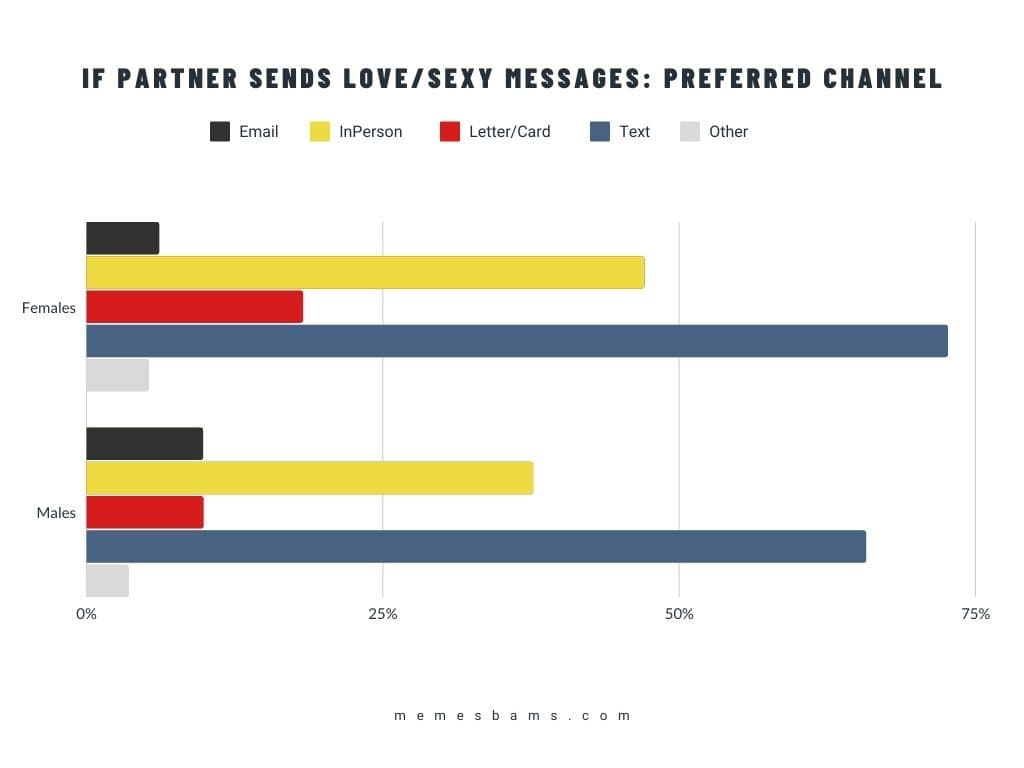 Figure 3: Preferred means of amorous communication of respondents receiving love/sexy messages, by gender
Figure 3: Preferred means of amorous communication of respondents receiving love/sexy messages, by gender
What can be deduced from these data?
- Texting was the most preferred mode of communication among female and male groups. In-person was the second.
- Letter/cards appeared to have fallen out of favor over texts and in-person.
- More women preferred letters/cards than men.
- Women preferred letters/cards than email.
- If not by text or in-person, men opted to receive them by email, letter, or card. Still, men prefer texting sixfold, and in-person, threefold more than email, letter, or card.
- The trend in women’s preferred channel, i.e. text > in-person > letters/cards > email > other was almost the same as the trend of the prevailing channels used by their partners, i.e. text > in-person > letters/cards > others > email. See Figure 4.
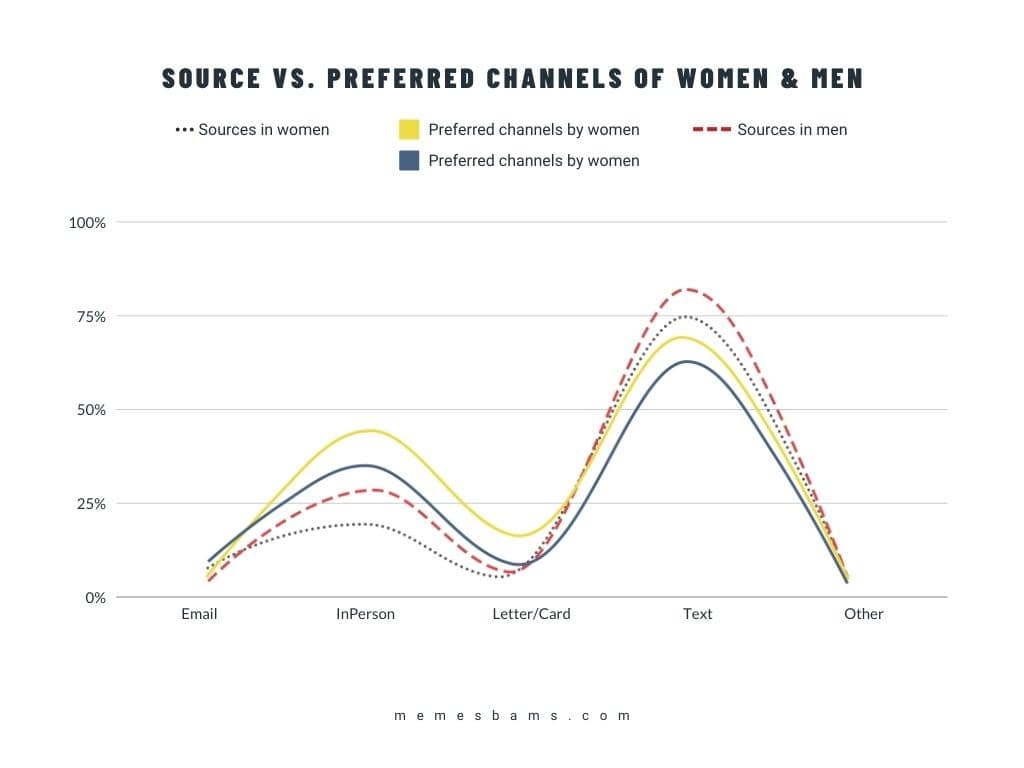 Figure 4: Source channels vs. preferred channels of women and men receiving amorous messages. (Multiple methods, not included)
Figure 4: Source channels vs. preferred channels of women and men receiving amorous messages. (Multiple methods, not included)
As mentioned earlier, of the total female respondents, 45.9% did not receive love/sexy messages from their partners. 46.9% of them said that they wished their partners would. Conversely, 47.6% of the male respondents said that they did not receive them from their partners. (See Figure 1) 54.1% of them wished their partners would.
On average, 51.1% wished their partners sent them love/sexy messages. For the summary of the percentages of the female and the male participants that did not receive amorous messages and yet would like to be receiving them from their partner, refer to the figure below.
 Figure 5: percentages of female and male respondents that would like to receive amorous messages from their partner
Figure 5: percentages of female and male respondents that would like to receive amorous messages from their partner
What can be deduced from the chart?
- On average, about half of the participants that reported they did not receive amorous messages would want their partners to send them such messages.
- Nearly half of female respondents that did not receive amorous messages would want their partners to do so.
- More than half of male respondents that reported they did not receive love/sexy messages wished their partners would do so.
- Interestingly, statistical analysis showed that there is a significant relationship between gender and the inclination to receive love/sexy messages, x2 (1, N=1279) = 6.52, p<.05. It is, therefore, likely that more men desire to receive amorous messages than women of this group.
Female respondents in this group would like their partner to send them amorous messages primarily by text (76.1%). Other preferences, in descending order, were as follows: in-person (40.0%), letter/card (25.2%), email (6.1%), and lastly, other means (2.6%). In males, text (74.1%) was also the most preferred over all other means. Next was in-person (32.3%), followed by email (16.4%), letter/card (13.4%), and then other means (6.5%). See Figure 6.
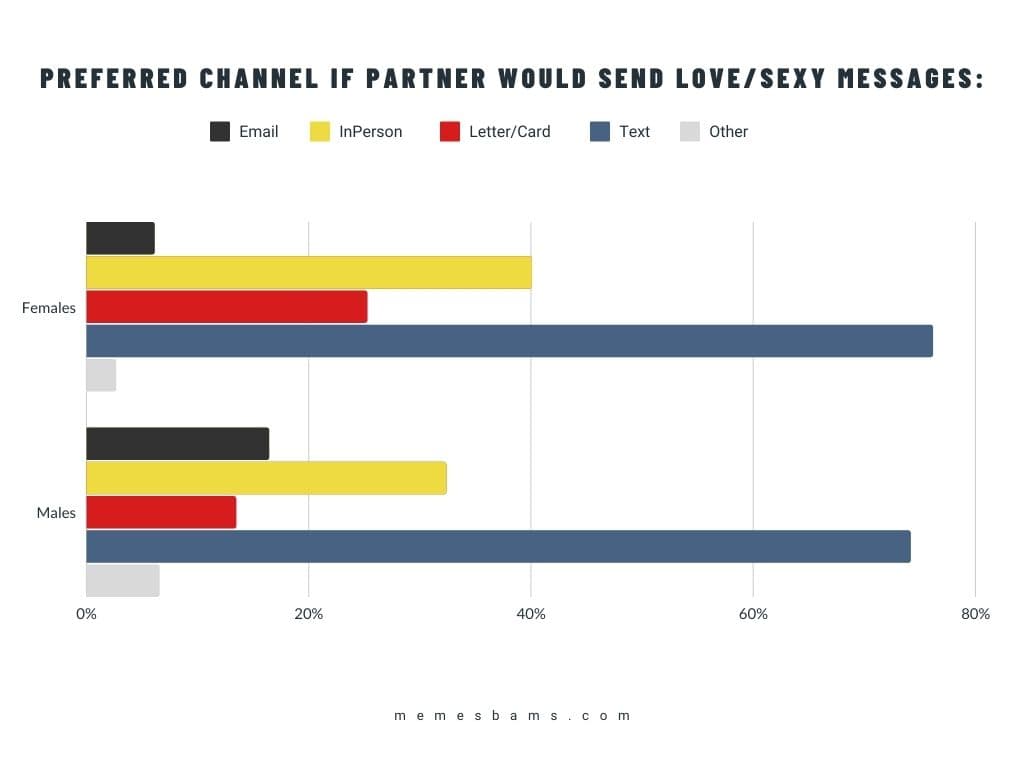 Figure 6: preferred means of respondents if the partner would send love/sexy messages, by gender
Figure 6: preferred means of respondents if the partner would send love/sexy messages, by gender
What can be deduced from the chart?
- Half of those who did not receive love/sexy messages yet wished to receive them favored text followed by in-person as the channel for amorous communications.
53.2% of the respondents that received amorous messages plus about half of 46.8% of those who did not receive them (see Figures 1 & 5) indicate that about 77% would want to receive love or sexy messages. A large percentage of them prefer texting as the medium.
Discussion
Time and again, communication has proven to be a crucial factor in edifying and nurturing romantic relationships. In this modern age, technology has bestowed indispensable tools that can afford people to stay connected and get in touch instantly beyond geographical and time limitations. Texting, in particular, has become the primary mode of communication, especially in romantic relationships.
Based on our research, 54.1% of women received amorous messages whereas 52.4% of men affirmed that they did. Statistical analysis found no link between gender and the experience of receiving amorous messages. Thus, their difference was negligible and therefore in the actual population, male and female percentages receiving romantic messages may essentially be the same.
Nevertheless, our study found certain disparities between gender preferences and the prevailing channels for amourous communication. Texting came out as the most preferred channel, followed by in-person. For women, the next popular choice was by letters or cards; email and other means were last. Men, by contrast, were more open to email as it was generally the third choice in both male groups, after texts and in-person.
Benefits of Texting
Not all individuals in a relationship received amorous messages. About half of the female respondents affirmed that they were given love or sexy messages whereas the other half said they were not. Furthermore, 46.9% of those who said they did not receive amorous messages admitted that they would want their partner to send them affectionate messages. Interestingly, men who did not receive love or sexy messages also longed for their partners to send them such messages. In fact, more men wished their partner would send them romantic messages than women of the matching group (Figure 5).
Another notable outcome from this research is the high preference of both men and women to texting over any other modes of romantic communication, including in-person, which only came in as second. The results suggest that more men and women prefer to read amorous messages in text messages than hear them face to face. While letters and cards are still viable options they are now further down the preference list.
The most important gleaning from this survey was a convincing response of 72.6% from females who preferred receiving these messages by text and email as one of the least preferred. Texting was also the preferred method by 65.7% of men, but they were more open to other forms of communication, including email.
Why has texting become the mainstream?
Texting has become the mainstream most likely due to the advantages that it confers. In essence, texting has an edge over the other channels in keeping the messages simple, short, and romantic. (2)
“Changes have been steady in all forms of communication since the digital age hit the mainstream,” noted Dr. Chloe Carmichael, a psychologist and member of memesbams.com advisory panel. “The survey shows how significant the shift has been when it comes to expressing love today.”
Living in a fast-paced society, many people are easily caught up with and overwhelmed by duties at work or at home. With texting, the sender needs to conjure up only a few words. More often than not, these few words suffice in sending a romantic message across.
Texting, unlike other modes of communication like letters or cards, makes it relatively easy to slide in messages instantaneously and imply that the partner is aptly remembered. One-liners, such as “Good morning” quotes (3) or “Good night” messages (4) may be enough to make the recipient feel endeared.
Simple gestures, such as texting in the morning, prove useful especially for those times when being together or waking up next to the significant other is outrightly not feasible. (5) Texting bridges this gap.
Texting also has the advantage of sending diverse forms of romantic texts — from sending intimate photos to sharing humorous relationship memes. With texts, the sender can also practice creativity, such as by the use of emojis. Emoticons help set the mood and add more context to the text. (6)
What cannot be said in person can be conveyed through text. The message can be relayed without the need for face-to-face encounters. Thus, the person will not have to worry about the reaction of the recipient, especially if the response is unflattering or discouraging. By texting, the person avoids the qualms and intimidations of potential rejection. That is especially crucial when the partner would want to engage or initiate coquetry.
“Sexting”
Coquetry is essential as it promotes healthy relationships. A coquettish text may help ease tension or incite higher or deeper levels of intimacy. (7) Sexting (a portmanteau of “sex” and “texting”) has become a common medium among couples who want to further liven up a romantic relationship. (8)
Recommendations
As our research points to texting as today’s predominant channel for expressing affection, the advisory panel members of MemesBams.com were impelled to share certain valuable insights. Sending love messages through text, whether suggestive or not, has some etiquette and best practices to follow. (8, 9)
Proofreading prior to sending a text, for instance, is a good texting habit. It is essential to prevent miscommunication and misperception, which are the two most common pitfalls of texts. When sending amorous messages to a partner, one can start out by remembering and then writing down some fond memories of the times spent together. Frame those memories into a love message.
MemesBams.com has a huge collection of quotes for inspiration that can be easily incorporated into a text greeting for anniversaries, birthdays, or any special moment of the day from the first light to late at night.
Conclusion
Texting is an essential tool in amorous communications largely due to its unique attributes that concur with the fast-paced lifestyle of today’s society. Our study has recognized the tangibility of its role particularly when it prevailed as the primary mode of choice among men and women when it comes to receiving love or coquettish messages from their partner.
If not through text (SMS), then, the next preferred mode is face-to-face communication, followed by letters or cards. Email is one of the least preferred channels among women. Nevertheless, in men, email turned out as the next popular choice after texting and in-person. The study has also established that not all individuals in a relationship have been receiving amorous messages from their significant other.
Many of those who did not receive them wished their partners would express affection, quintessentially through texts. Overall, this study gives credence to the notion that texting matters in romantic relationships when most men and women favored texting the most among the other modes of amorous communication prevailing nowadays.
References:
- Is Constant Texting Good or Bad for Your Relationship? (2014). Psychology Today. https://www.psychologytoday.com/intl/blog/meet-catch-and-keep/201403/is-constant-texting-good-or-bad-your-relationship
- 85 Romantic Text Messages for Her – Sweet Messages She’ll Love. (2020, July 16). MemesBams. https://memesbams.com/romantic-texts-for-girlfriend/
- Lovely Good Morning Quotes for Her. (2020, June 5). MemesBams. https://memesbams.com/good-morning-quotes-for-her/
- Goodnight Paragraph for Him. (2018, July 24). MemesBams. https://memesbams.com/goodnight-paragraph-for-him/
- Cute Paragraphs for Her to Wake Up to. (2018, July 20). MemesBams. https://memesbams.com/paragraphs-for-her-to-wake-up-to/
- Cute Paragraphs for Your Beloved to Wake Him Up to You. (2019, February). MemesBams. https://memesbams.com/cute-paragraphs-for-your-beloved-to-wake-him-up-to-you/
- 85 Flirty Texts for Him: Cute Text Messages He Will Love. (2020, June 24). MemesBams. https://memesbams.com/flirty-texts-for-him/
- Freaky Paragraphs for Him. (2019, February 12). MemesBams. https://memesbams.com/freaky-paragraphs-for-him/
- I Love You Text Messages for Him and Her. (2020, June 17). MemesBams. htts://memesbams.com/love-messages/